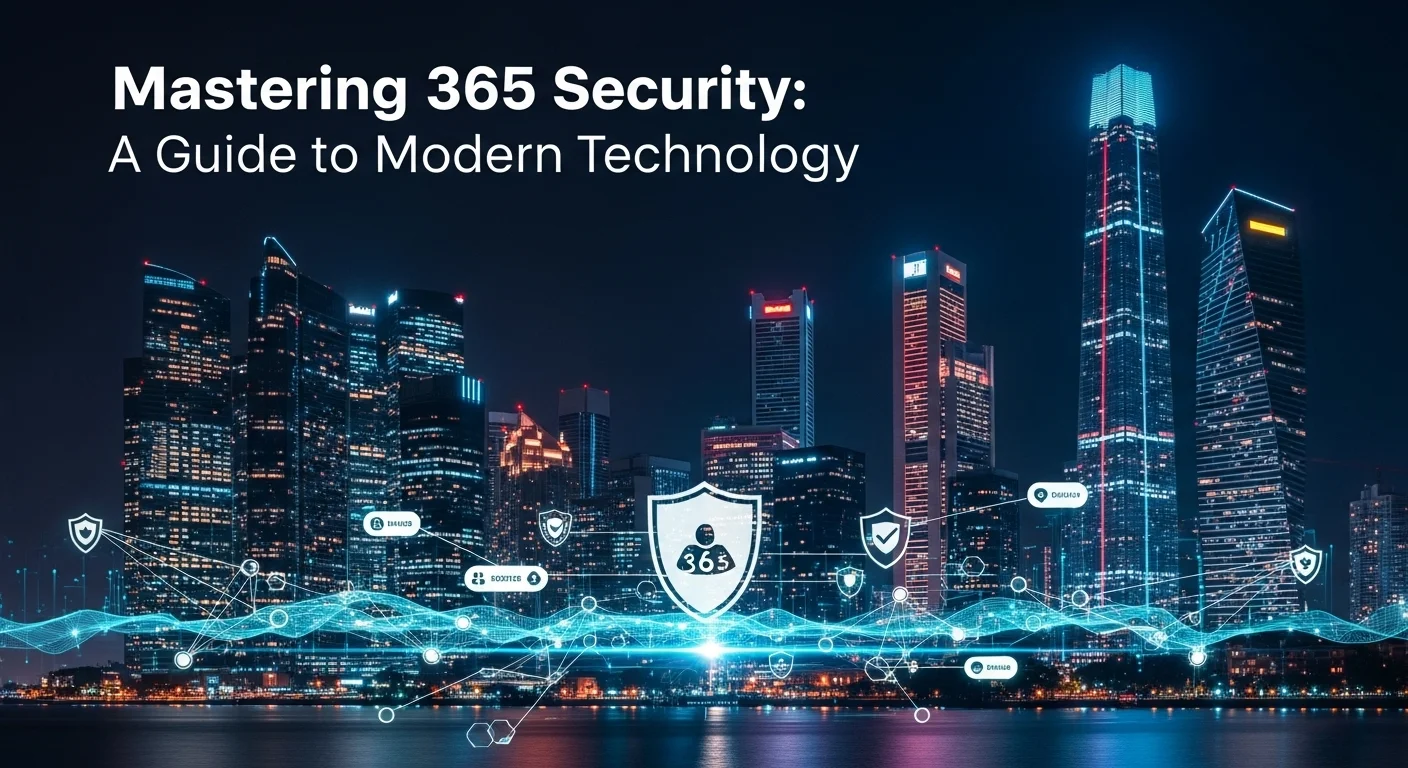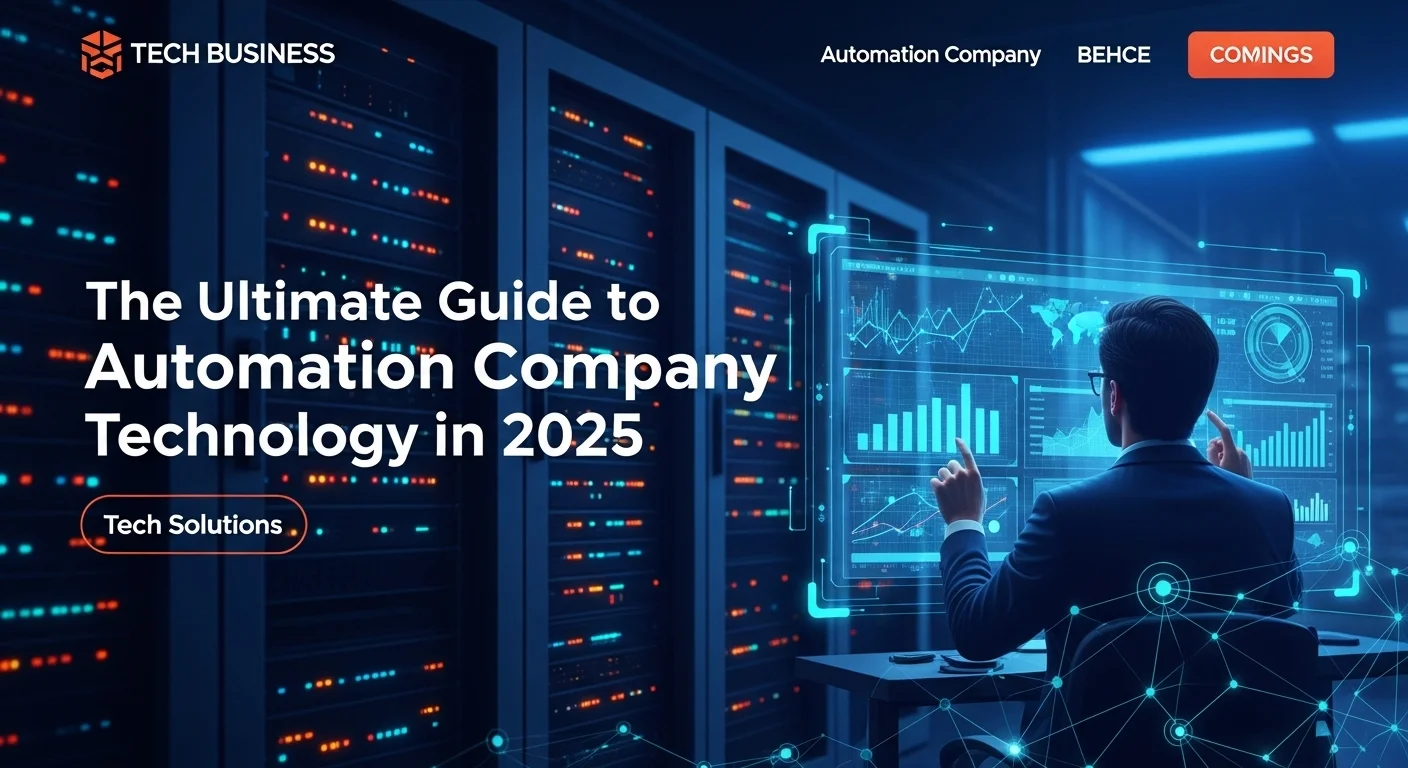Mastering 365 Security: A Guide to Modern Technology

Executive Summary
In today's digital-first landscape, understanding 365 Security is paramount for any technology-driven business. This article provides a comprehensive exploration of the Microsoft 365 security ecosystem, a suite of tools designed to protect organizations in the cloud. We delve into the critical importance of a robust security posture, moving beyond traditional antivirus to a holistic strategy encompassing identity, endpoints, data, and applications. For tech enthusiasts and business leaders alike, this piece breaks down the essential components of microsoft 365 cyber security, explaining how services like Microsoft Defender, Entra ID, and Purview work in concert. The focus is on practical application, demonstrating how leveraging office 365 cyber security features can safeguard against sophisticated threats, ensure regulatory compliance, and foster a secure environment for innovation and growth. This is your executive summary for navigating the complexities of modern digital defense and maximizing microsoft office 365 data security.
Table of Contents
What is 365 Security and why is it important in Technology?
In the ever-evolving landscape of digital technology, the term '365 Security' has become a cornerstone for modern enterprises. But what does it truly encompass? At its core, 365 Security refers to the comprehensive, integrated, and intelligent security framework built into the Microsoft 365 ecosystem. It's not a single product but a suite of advanced services designed to protect organizations across all facets of their digital operations. This framework represents a paradigm shift from traditional, siloed security solutions to a unified approach that addresses the dynamic and sophisticated nature of contemporary cyber threats. Understanding its importance is crucial for any business that relies on technology for its daily operations, communication, and data management.
The journey of 365 Security began with the evolution of Microsoft's productivity suite. What was once known as Office 365, primarily a collection of cloud-based applications like Word, Excel, and Outlook, has transformed into Microsoft 365. This expanded offering integrates the familiar Office apps with Windows operating systems and, most critically, a powerful layer of Enterprise Mobility + Security (EMS). This evolution is a direct response to the changing nature of work. With the rise of remote and hybrid work models, the traditional security perimeter—the office network—has dissolved. Employees now access sensitive corporate data from various locations, on multiple devices, and over different networks. This new reality demands a security model that is not tied to a physical location but is centered on users, devices, and data, wherever they may be. This is the fundamental principle behind the robust microsoft 365 security architecture.
The Four Pillars of Microsoft 365 Security
To truly grasp the scope of 365 Security, it's helpful to break it down into four foundational pillars. These pillars work together to provide a defense-in-depth strategy, ensuring that if one layer of defense is compromised, others are in place to mitigate the threat.
1. Identity and Access Management (IAM): This is arguably the most critical pillar in a zero-trust world. The identity of a user is the new security perimeter. Microsoft's primary tool here is Microsoft Entra ID (formerly Azure Active Directory). It provides the foundation for controlling who has access to what. Key features include Single Sign-On (SSO), which simplifies user access while centralizing control, and Multi-Factor Authentication (MFA), which adds a crucial layer of verification beyond a simple password. [14] Conditional Access policies take this a step further, allowing administrators to enforce granular controls based on user, device, location, and real-time risk. For any organization serious about microsoft 365 cyber security, mastering IAM is the first and most important step.
2. Threat Protection: This pillar is focused on proactively identifying, blocking, and responding to cyberattacks. The flagship suite of services here is Microsoft Defender. This isn't one tool but a family of them, including Microsoft Defender for Office 365, which protects against threats in emails and collaboration tools (like phishing and malware); Microsoft Defender for Endpoint, which provides endpoint detection and response (EDR) for devices; and Microsoft Defender for Identity, which monitors on-premises Active Directory signals to detect insider threats and compromised identities. These services are interconnected through Microsoft Defender XDR (Extended Detection and Response), which correlates signals from across the environment to provide a unified view of an attack, enabling faster and more effective responses. This comprehensive approach to office 365 cyber security moves beyond simple antivirus to tackle the entire lifecycle of a threat.
3. Information Protection and Governance: Protecting data itself is the ultimate goal. Even if an attacker gains access, the data should remain secure and unusable. This is the domain of Microsoft Purview. [1, 2] It's a unified data governance and compliance solution that helps organizations understand, manage, and protect their sensitive data. Key components include Data Loss Prevention (DLP), which prevents the accidental or malicious sharing of sensitive information (like credit card numbers or health records) via email, Teams, or SharePoint. [3] Sensitivity Labels allow organizations to classify and encrypt documents and emails, ensuring that only authorized users can access them, no matter where the data travels. This focus on microsoft office 365 data security is essential for regulatory compliance (like GDPR or HIPAA) and protecting intellectual property.
4. Security Management and Cloud Security: This pillar provides the tools for visibility, control, and management across the entire security landscape. Microsoft Sentinel acts as the central nervous system for security operations. [17] It is a cloud-native Security Information and Event Management (SIEM) and Security Orchestration, Automation, and Response (SOAR) solution. Sentinel ingests data from all the other security pillars and even third-party sources, using AI to detect threats and automate responses. [26] Another key component is the Microsoft Secure Score, a tool within the Microsoft 365 Defender portal that provides a measurement of an organization's security posture and offers recommendations for improvement. [13] This holistic view, managed through what can be called microsoft security office 365, empowers IT teams to move from a reactive to a proactive security stance.
Why is This Technology So Important for Modern Business?
The importance of a comprehensive 365 Security strategy cannot be overstated in the current technological climate. Businesses face an unprecedented volume and sophistication of cyber threats. Phishing attacks, ransomware, and data breaches are no longer abstract risks but daily realities that can cause devastating financial and reputational damage. The integrated nature of the Microsoft 365 security stack provides a significant advantage. Instead of managing a dozen disparate security products from different vendors—each with its own console, alert system, and integration challenges—organizations can leverage a single, cohesive ecosystem. This integration is not just about convenience; it's about efficacy. When Defender for Office 365 detects a malicious link in an email and a user clicks it, it can communicate with Defender for Endpoint to isolate the device and with Entra ID to flag the user account as high-risk, all automatically. This cross-service communication is a powerful force multiplier for security teams.
Furthermore, the reliance on cloud services makes robust security a non-negotiable requirement. As businesses migrate more of their critical infrastructure and data to the cloud, they are entrusting a third party with their most valuable assets. A strong microsoft office 365 data security framework provides the necessary assurances that this data is protected against both external attacks and internal risks. It helps businesses meet their compliance obligations, which are becoming increasingly stringent across all industries. Finally, in the age of AI, the data an organization holds is not just for record-keeping; it's the fuel for future innovation. Protecting this data with a comprehensive microsoft 365 cyber security strategy is not just a defensive measure; it is a strategic imperative that enables a business to operate with confidence, innovate freely, and build trust with its customers. The technology of 365 Security is, therefore, not just an IT concern but a fundamental enabler of modern business resilience and growth.

Complete guide to 365 Security in Technology and Business Solutions
Navigating the intricate web of 365 Security requires a deep understanding of its components and how they can be tailored to provide robust business solutions. This guide offers a technical and strategic walkthrough of the key services, comparing features and providing insights into how they form a cohesive defense mechanism. Mastering these tools is essential for any organization aiming to fully leverage the power of microsoft 365 security.
Deep Dive into Identity and Access Management: Microsoft Entra
The foundation of any modern security architecture is identity. Microsoft Entra ID (formerly Azure AD) is the control plane for access across the entire Microsoft ecosystem and beyond. It's more than just a directory of users; it's a sophisticated engine for enforcing security policies.
- Multi-Factor Authentication (MFA) and Passwordless Authentication: The most fundamental security upgrade any business can make is enabling MFA. Entra ID supports a wide range of authentication methods, from traditional SMS codes to the more secure Microsoft Authenticator app (push notifications, number matching) and FIDO2 security keys. The ultimate goal is a passwordless state, which significantly reduces the risk of phishing and password spray attacks. Businesses should prioritize the rollout of the Authenticator app for all users as a baseline.
- Conditional Access Policies: This is where the true power of Entra ID shines. Conditional Access is an 'if-this, then-that' framework for authentication. An administrator can create policies that evaluate various signals before granting access. For example: IF a user is attempting to access SharePoint Online, AND they are not on a corporate network, AND their device is not marked as compliant in Microsoft Intune, THEN block access. Or, a more common policy: IF a user is signing in from an unfamiliar location, THEN require MFA. These policies are the primary tool for implementing a Zero Trust security model. [14]
- Identity Protection: This feature, available in Entra ID P2 (part of Microsoft 365 E5), uses machine learning to detect risk at both the user and sign-in level. It identifies anomalies like sign-ins from atypical locations, infected devices, or leaked credentials found on the dark web. Administrators can configure policies to automatically respond to these risks, such as forcing a password reset or blocking access until an administrator intervenes. This proactive capability is a critical element of advanced microsoft 365 cyber security.
Unpacking Threat Protection: The Microsoft Defender XDR Suite
Microsoft Defender XDR is the unified pre- and post-breach enterprise defense suite. It coordinates detection, prevention, investigation, and response across endpoints, identities, email, and applications to provide integrated protection against sophisticated attacks. [5, 11]
- Microsoft Defender for Office 365: This is the first line of defense for many organizations, as email remains the number one threat vector. It comes in two main plans. Plan 1 (in M365 Business Premium, E3) provides core protections like Safe Links (which rewrites URLs and scans them at the time of click) and Safe Attachments (which detonates attachments in a sandbox environment to check for malicious behavior). [9] Plan 2 (in M365 E5) adds advanced features like Threat Explorer for real-time threat hunting, Attack Simulation Training to test and educate users, and automated investigation and response (AIR) capabilities. [10] A robust office 365 cyber security posture is impossible without properly configuring these policies.
- Microsoft Defender for Endpoint: This is a comprehensive Endpoint Protection Platform (EPP) and Endpoint Detection and Response (EDR) solution. It goes far beyond traditional antivirus. Defender for Endpoint provides attack surface reduction rules to harden devices, next-generation protection to block malware, and EDR capabilities to detect and investigate breaches that might bypass initial defenses. It gives security teams deep visibility into endpoint activity, allowing them to hunt for threats and understand the full scope of an attack.
- Microsoft Defender for Cloud Apps: This component acts as a Cloud Access Security Broker (CASB). It provides visibility and control over the cloud apps being used within the organization—both Microsoft apps and third-party services like Salesforce, Dropbox, or Slack. It can identify risky user behavior, enforce data loss prevention policies within cloud apps, and protect against threats in real-time.
- Integration through XDR: The magic of the Defender suite is its integration. An alert from Defender for Office 365 about a phishing email can be automatically correlated with an alert from Defender for Endpoint on the user's machine and an alert from Defender for Cloud Apps about unusual file sharing. Microsoft Defender XDR combines these into a single 'Incident,' providing a complete attack story and allowing security teams to respond holistically rather than chasing individual, disconnected alerts.
Mastering Information Protection: Microsoft Purview
Protecting data is the end goal. Microsoft Purview is the suite of tools designed to ensure data is governed, protected, and compliant throughout its lifecycle. [7, 8]
- Data Loss Prevention (DLP): Purview's DLP capabilities allow organizations to create policies that identify and protect sensitive information across Microsoft 365 services. [3] For example, a policy can be configured to detect when a user tries to email a document containing multiple credit card numbers to an external recipient. The policy can be set to simply audit the event, show the user a warning, or block the email entirely. These policies are crucial for maintaining microsoft office 365 data security and meeting regulatory requirements.
- Sensitivity Labels: This is one of the most powerful features within Purview. Sensitivity labels are customizable tags that can be applied to documents and emails. These labels are persistent, meaning they travel with the data. A label can apply both visual markings (like a 'Confidential' header) and protection settings (like encryption). For instance, a 'Highly Confidential' label could encrypt the document and grant access only to a specific group of users within the company. Even if that document is leaked, it remains encrypted and unreadable to unauthorized individuals.
- Data Lifecycle Management: This feature helps organizations manage the retention and deletion of data. Retention policies can be created to automatically keep data for a required period (e.g., for legal or regulatory reasons) and then dispose of it securely. This reduces the organization's data footprint and minimizes the risk associated with holding onto old, unnecessary data.
Centralizing Operations: Microsoft Sentinel
For organizations with mature security operations, Microsoft Sentinel provides the overarching view. [17] It connects to all the Microsoft security services, as well as third-party firewalls, network devices, and applications. [29] By ingesting logs from all these sources, Sentinel uses powerful analytics and machine learning to hunt for threats that might be missed by individual tools. It can detect complex attack patterns, such as slow data exfiltration or lateral movement across the network. Its SOAR capabilities allow for the creation of 'Playbooks'—automated workflows that can respond to incidents, such as creating a service ticket, blocking an IP address at the firewall, and disabling a user account, all without human intervention. The combination of the entire microsoft security office 365 stack, feeding data into Sentinel, provides an unparalleled level of visibility and control for a security operations center (SOC).

Tips and strategies for 365 Security to improve your Technology experience
Deploying the advanced tools within the Microsoft 365 ecosystem is only the first step. To truly enhance your organization's technology experience and build a resilient security posture, you must adopt a strategic approach focused on best practices, continuous improvement, and user empowerment. This section provides actionable tips and strategies to help you maximize your investment in microsoft 365 security and foster a culture of security awareness.
Foundational Best Practices: The Non-Negotiables
Before diving into advanced configurations, ensure these foundational elements are in place. They represent the biggest security gains for the least amount of effort and are considered standard practice for any modern IT environment.
1. Enforce Multi-Factor Authentication (MFA) for All Users: This is the single most effective measure you can take to protect your organization. According to Microsoft, MFA can block over 99.9% of account compromise attacks. Don't make it optional. Use Conditional Access policies to enforce MFA for all users, without exception. Prioritize modern, phishing-resistant methods like the Microsoft Authenticator app over less secure SMS codes. [4, 6]
2. Block Legacy Authentication: Protocols like POP, IMAP, and older Office clients do not support MFA. Attackers specifically target these protocols for credential stuffing and password spray attacks. Create a Conditional Access policy to block legacy authentication. While there might be initial pushback for specific use cases (like 'scan to email' from old printers), there are modern, secure workarounds for almost every scenario. Disabling it closes a massive and commonly exploited security hole. [4]
3. Implement Baseline Security Policies: Microsoft provides security presets that offer a strong baseline of protection. For email, enable the 'Standard' or 'Strict' preset security policies in the Defender portal. These automatically configure Safe Links and Safe Attachments with recommended settings, providing a solid foundation for your office 365 cyber security strategy. [6]
4. Harden Endpoints with Attack Surface Reduction (ASR): In Microsoft Defender for Endpoint, configure ASR rules. These rules target specific software behaviors often abused by malware, such as Office apps creating executable content or scripts running from email. Start by deploying them in 'audit' mode to see what would be blocked without impacting users, then gradually move to 'enforce' mode.
Advanced Strategies for a Mature Security Posture
Once the fundamentals are solid, you can move on to more sophisticated strategies that leverage the full power of the microsoft 365 cyber security suite.
1. Adopt a Zero Trust Mindset: The Zero Trust model operates on the principle of 'never trust, always verify.' This means every access request should be treated as if it originates from an open network. This isn't a single product but a security strategy implemented using tools you already have. Use granular Conditional Access policies that check for user risk, sign-in risk, device compliance, and location before granting access. [14] Assume breach, and design your security to limit the 'blast radius' if an account or device is compromised.
2. Leverage the Microsoft Secure Score: The Secure Score in the Microsoft 365 Defender portal is your personalized guide to improving security. [13] It analyzes your configuration and compares it to Microsoft's best practices, providing a numerical score and a prioritized list of 'Improvement Actions.' Each action gives you a clear description of the threat, the steps to mitigate it, and the score impact. Make it a regular practice for your IT team to review the Secure Score and work on implementing the recommendations. It’s a powerful tool for demonstrating security progress to leadership.
3. Train Your Users with Attack Simulation: Technology alone is not enough; your users are a critical part of your defense. Use the Attack Simulation Training tool in Defender for Office 365 Plan 2 to run realistic, benign phishing campaigns. [9] You can simulate credential harvesting attacks, malware attachment attacks, and more. The tool tracks which users fall for the simulation and automatically enrolls them in targeted training modules. This data-driven approach is far more effective than generic annual security training and directly strengthens your defenses against real-world phishing.
4. Classify and Protect Your Data with Microsoft Purview: Don't let your most sensitive data sit unprotected. Start a data classification project using Microsoft Purview. Define a simple, clear set of sensitivity labels (e.g., Public, Internal, Confidential, Highly Confidential). Use auto-labeling policies to automatically apply labels to data that matches certain patterns (like finding source code or financial data). For the most critical data, apply encryption with the labels. This ensures that even if your perimeter is breached, your crown jewels—your data—remain secure. This is the heart of a true microsoft office 365 data security strategy. [1]
Staying Ahead: Continuous Improvement and External Resources
The threat landscape is constantly changing, and so are Microsoft's security tools. A 'set it and forget it' approach is a recipe for disaster. Create a culture of continuous learning and adaptation.
- Monitor the Message Center: Regularly check the Message Center in the Microsoft 365 Admin Center. Microsoft announces new features, changes to existing ones, and deprecations here. Staying informed allows you to proactively adapt your security strategy.
- Integrate with SIEM/SOAR: For larger organizations, integrating the microsoft security office 365 services with Microsoft Sentinel is a game-changer. It provides a single pane of glass for all security events and enables powerful automation that can drastically reduce your security team's manual workload and response times. [25, 26]
- Follow Reputable Security Experts: The cybersecurity community is vibrant and shares a wealth of knowledge. Following reputable sources can provide early warnings about new threats and practical advice on how to combat them. A must-read resource for in-depth security news and investigations is the Krebs on Security blog, which provides deep dives into the latest breaches and vulnerabilities. [44]
By combining these foundational best practices, advanced strategies, and a commitment to continuous improvement, you can transform your 365 Security from a simple collection of tools into a dynamic, intelligent, and resilient defense system that truly protects your organization's technology and enables it to thrive securely.
Expert Reviews & Testimonials
Sarah Johnson, Business Owner ⭐⭐⭐
The information about 365 Security is correct but I think they could add more practical examples for business owners like us.
Mike Chen, IT Consultant ⭐⭐⭐⭐
Useful article about 365 Security. It helped me better understand the topic, although some concepts could be explained more simply.
Emma Davis, Tech Expert ⭐⭐⭐⭐⭐
Excellent article! Very comprehensive on 365 Security. It helped me a lot for my specialization and I understood everything perfectly.



